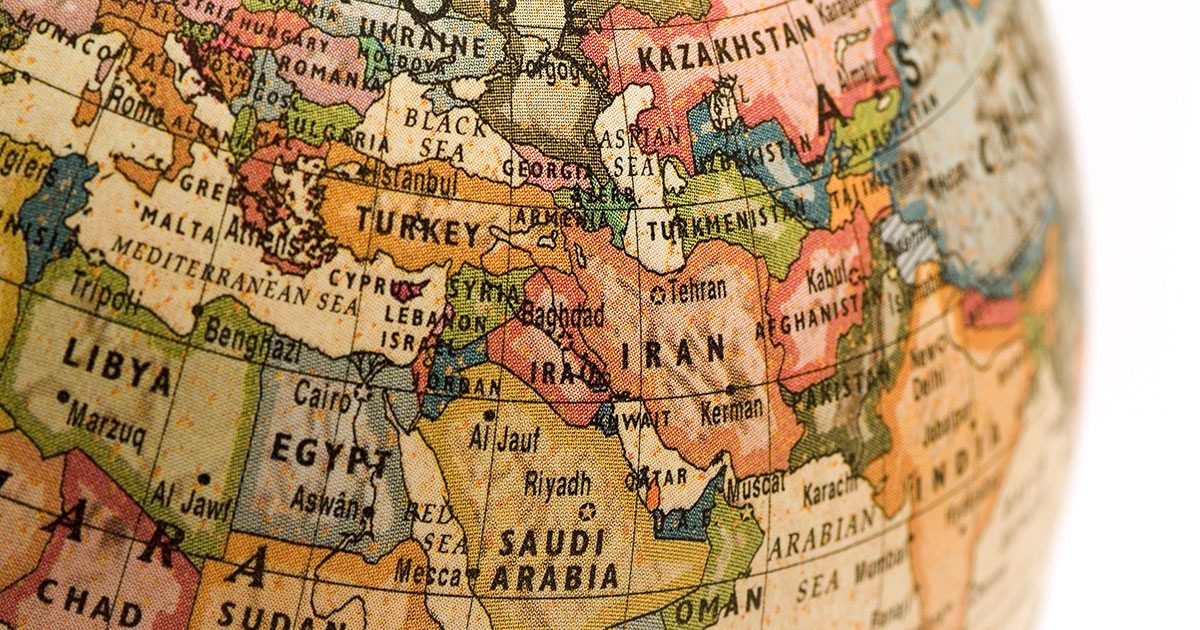
The legality of Israel’s actions in the ongoing war in the Gaza Strip region of Palestine has been a subject of fierce debate among many people. Although there appears to be no neutral position when discussing this issue, given not only its geopolitical but also its humanitarian impact, a balanced approach requires an informed understanding of the public international law principle of international humanitarian law (IHL) as the principle applies to armed conflicts. This article aims to provide an overview of that regulatory regime.
What International Humanitarian Law Is Not
IHL is distinctly different from international human rights law (IHRL), which prescribes the obligations of governments to act in certain ways or to refrain from certain acts, in order to promote and protect described rights that are inherent to all human beings, regardless of race, sex, nationality, ethnicity, language, religion, or any other status.1
 Ngosong Fonkem, West Virginia 2011 (JD, MBA), Tulane 2012 (LL.M.), is an attorney at Harris Sliwoski LLP, Seattle, a firm that provides companies of all sizes with business-practical representation on all aspects of international trade law. He is immediate past chair of the State Bar of Wisconsin’s International Practice Section and a member of the Business Law Section. He is also coauthor of the 2020 book, Trade Crash: A Primer on Surviving and Thriving in Pandemics & Global Trade Disruption.
Ngosong Fonkem, West Virginia 2011 (JD, MBA), Tulane 2012 (LL.M.), is an attorney at Harris Sliwoski LLP, Seattle, a firm that provides companies of all sizes with business-practical representation on all aspects of international trade law. He is immediate past chair of the State Bar of Wisconsin’s International Practice Section and a member of the Business Law Section. He is also coauthor of the 2020 book, Trade Crash: A Primer on Surviving and Thriving in Pandemics & Global Trade Disruption.
These rights include the rights to life and liberty, freedom from slavery and torture, freedom of opinion and expression, to work and to receive an education, and many more.2
It is also distinct from the “laws of war,” which typically focus on the criteria and conditions under which sovereign states may resort to war or the use of armed forces, including the self-defense exception set out in Article 51 of the United Nations Charter of 1945.3
What International Humanitarian Law Is
Unlike its companion legal regimes stated above, IHL, also known as the law of armed conflict (LOAC), focuses on the conduct of parties involved in armed conflicts.
The genesis of modern IHL can be traced to the aftermath of World War II and the atrocities committed during that conflict. Deeply affected by the horrors of the war, the victorious nations sought to establish a legal framework that would prevent and address violations in future wars and armed conflicts. The foundational instruments, including the four Geneva Conventions of 19494 and their Additional Protocols of 19775 as well as customary international humanitarian law,6 outline its legal structure.
The scope of IHL extends to both international7 and non-international armed conflicts8 and are also nonreciprocal,9 meaning that they apply regardless of what the other side has done. Thus, IHL offers a comprehensive legal framework that addresses a diverse range of situations. Central to IHL are the three core principles governing the conduct of armed conflicts: 1) distinction, 2) military necessity, and 3) proportionality.
International humanitarian law (IHL), also known as the law of armed
conflict (LOAC), focuses on the conduct of parties involved in armed
conflicts.
Distinction
A fundamental tenet of IHL is the unequivocal protection of civilians and individuals no longer or not participating in armed conflicts. The principle of distinction, which was formalized in the Additional Protocols, refers to military obligations to differentiate between combatants and civilians when military leaders decide who to target. This requires combatants to distinguish themselves from non-combatants, usually accomplished by wearing uniforms. It also requires combatants to only target military objectives, and the weapons used must be able to distinguish between civilians and combatants.10
Military Necessity
Military necessity is similarly used as a guide to determine what counts as legitimate military objectives. This principle is an attempt to balance a combatant’s need to gain military advantage while minimizing suffering of the civilian population. Though military necessity is mentioned in several multilateral treaties, neither the Geneva Conventions nor the Additional Protocols explicitly codify this important concept. Thus, its applications are based on customary international humanitarian law principles.
Proportionality
Finally, the principle of proportionality prescribed in Article 5111 and Article 5712 of the Additional Protocols provides guidance on how to balance the value of a particular military objective with humanitarian concerns. Under this principle, the collateral damage to the civilians must be proportional to the value of the military target. For example, the prohibition of indiscriminate and disproportionate attacks underscores the commitment to safeguard civilian lives and infrastructure.
Enforcement Mechanisms and Accountability
Enforcement of IHL begins at the domestic level, requiring nations to integrate these principles into their legal systems. Nations are obligated to adopt legislation that criminalizes violations of IHL, ensuring that individuals within their jurisdiction can be held accountable for war crimes and related offenses. Thus, domestic courts play a pivotal role in prosecuting perpetrators, offering a primary avenue for enforcement.
At the international level, international criminal tribunals have emerged as instrumental tools for enforcing IHL on a global scale. The International Criminal Court (ICC), established by the Rome Statute in 1998, holds jurisdiction over the most serious international crimes, including war crimes, crimes against humanity, and genocide.13 The ICC serves as a court of last resort, intervening when national jurisdictions are unwilling or unable to prosecute.
Additionally, ad hoc tribunals such as the International Criminal Tribunal for the former Yugoslavia14 and the International Criminal Tribunal for Rwanda15 have played crucial roles in prosecuting individuals responsible for grave breaches of IHL.
National and International Fact-Finding Bodies
Fact-finding missions, both at the national and international levels, also play a vital role in the enforcement of IHL. National commissions of inquiry can investigate alleged violations within a state’s jurisdiction, providing evidence for domestic prosecutions.16 Internationally mandated bodies, such as United Nations commissions17 and independent fact-finding missions, contribute to investigations, establishing factual records that can inform legal proceedings.
Sanctions, Diplomacy, and Peer Pressure
Nations and international organizations can also leverage diplomatic tools and sanctions to enforce IHL. The United Nations Security Council has the authority to impose sanctions on individuals or entities associated with violations, using economic and diplomatic pressure to influence the behavior of parties involved in armed conflicts.18
Finally, diplomatic pressure, public condemnation, and the threat of sanctions collectively contribute to the enforcement of IHL by fostering an environment in which compliance is encouraged, and violators face consequences for their actions.
Conclusion
Although IHL is not divorced from politics and is often influenced by it, as is the case with the ongoing war in Israel, applications of IHL to the war are clear cut. As debate on the legality of the conduct of the war continues, it is imperative that the legal community help educate the public on the applicability of IHL to ensure that the war’s devastating effects are mitigated by the force of international law.
Endnotes
1 United Nations, Human Rights, https://www.un.org/en/global-issues/human-rights. All websites cited in these notes were last visited on Jan. 5, 2024.
2 United Nations, International Bill of Human Rights, https://www.ohchr.org/en/what-are-human-rights/international-bill-human-rights.
3 United Nations Charter, https://www.un.org/en/about-us/un-charter.
4 These are a set of four treaties that establish the humanitarian rules of war. They provide protection for wounded and sick soldiers on land and at sea, prisoners of war, and civilians in times of armed conflict. The conventions have been ratified by the majority of the world’s nations. See United Nations, Geneva Convention Relative to the Protection of Civilian Persons in Time of War, https://www.ohchr.org/en/instruments-mechanisms/instruments/geneva-convention-relative-protection-civilian-persons-time-war.
5 These are additional treaties that extend and strengthen the protection afforded by the Geneva Conventions. They address issues such as the protection of victims of non-international armed conflicts and the use of new weapons. See Int’l Comm. of the Red Cross (ICRC), The Geneva Conventions of 1949 and their Additional Protocols, https://www.icrc.org/en/doc/war-and-law/treaties-customary-law/geneva-conventions/overview-geneva-conventions.htm.
6 ICRC, IHL Databases, International Humanitarian Law Databases [hereinafter IHL Databases], https://ihl-databases.icrc.org/en/customary-ihl.
7 “International armed conflict” refers to conflicts between two or more states (that is, nations).
8 “Non-international armed conflict” refers to conflicts within the borders of a single nation involving 1) governmental forces and non-state armed groups or 2) non-state armed groups. Typically, under these scenarios, Common Article 3 of the Geneva Conventions and Additional Protocol II would provide a basic set of protections for persons in the hands of a party to the conflict other than a state party. However, in recent years, core principles of IHL, especially those related to the treatment of civilians and combatants, have extended to both international and non-international armed conflicts, resulting in the development of customary international humanitarian law for these scenarios under the prism of the so-called principle of common humanity.
9 Tom Porteous, International Humanitarian Law Applies to All States, Human Rights Watch (Oct. 19, 2023), https://www.hrw.org/news/2023/10/19/international-humanitarian-law-applies-all-states.
10 “Military objectives” is defined by the International Committee of the Red Cross (ICRC) as limited to those “objects that, by their nature, location, purpose or use make an effective contribution to military action, and whose partial or total destruction, capture or neutralization, in the circumstances ruling at the time, offers a definite military advantage.” See ICRC, IHL Databases, Rule 8. Definition of Military Objectives, https://ihl-databases.icrc.org/en/customary-ihl/v1/rule8.
11 Id.,Article 51 – Protection of the civilian population, https://ihl-databases.icrc.org/en/ihl-treaties/api-1977/article-51.
12 Id., Article 57 – Precautions in attack, https://ihl-databases.icrc.org/en/ihl-treaties/api-1977/article-57.
13 United Nations Hum. Rts. Off. of High Commissioner, Rome Statute of the International Criminal Court, https://www.ohchr.org/en/instruments-mechanisms/instruments/rome-statute-international-criminal-court.
14 United Nations, International Criminal Tribunal for the Former Yugoslavia, https://www.icty.org/en.
15 United Nations, International Residual Mechanism for Criminal Tribunals, https://www.irmct.org/en.
16 United Nations Hum. Rts. Council, International Commissions of Inquiry, Commissions on Human Rights, Fact-Finding Missions and Other Investigations, https://www.ohchr.org/en/hr-bodies/hrc/co-is.
17 See supra note 1.
18 United Nations Security Council, https://www.un.org/securitycouncil/.
» Cite this article: 97 Wis. Law. 37-39 (February 2024).
